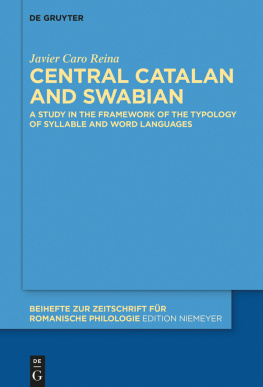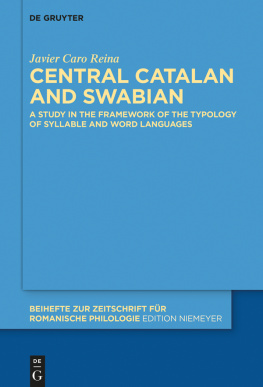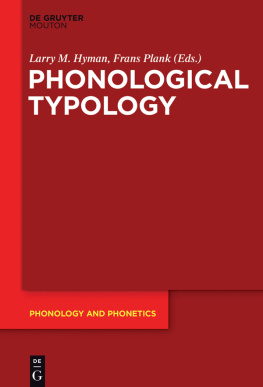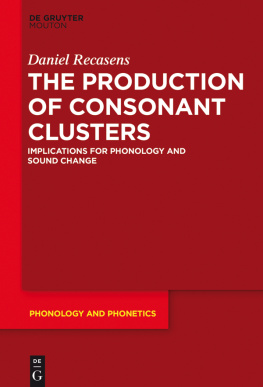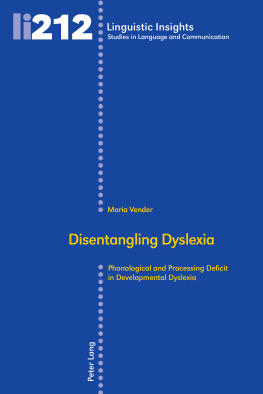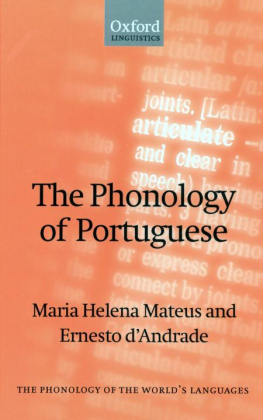Contents
Guide

Javier Caro Reina
Central Catalan and Swabian
Beihefte zur Zeitschrift fr romanische Philologie

Herausgegeben von
Claudia Polzin-Haumann und Wolfgang Schweickard
Band 422

ISBN 978-3-11-055538-7
e-ISBN [PDF] 978-3-11-057306-0
e-ISBN [EPUB] 978-3-11-057075-5
ISSN 0084-5396
Library of Congress Control Number: 2018958031
Bibliographic information published by the Deutsche Nationalbibliothek
The Deutsche Nationalbibliothek lists this publication in the Deutsche Nationalbibliografie; detailed bibliographic data are available on the Internet at http://dnb.dnb.de.
2019 Walter de Gruyter GmbH, Berlin/Boston
www.degruyter.com
Acknowledgements
This work would not have been possible without the help of many people. I would like to start with Peter Auer, the first supervisor of the PhD, for his advice and support through the years. Thanks also go to Maria-Rosa Lloret, who happily agreed to be the second supervisor. I would also like to thank Renate Schrambke, who aroused my interest in dialectology and the typology of syllable and word languages. For discussions on the typology, I am grateful to Renata Szczepaniak. I am also especially thankful to Marco Garca Garca for giving me the last kick to finish my thesis. My thanks also go to Mercedes Figueras for being there for questions regarding Catalan grammar and pronunciation. For discussion and comments, many thanks to Josefina Carrera, Matthias Heinz, Nikolay Khakimov, Stefan Kleiner, Werner Knig, Martin Kmmel, Conxita Lle, Robert Murray, Cludia Pons-Moll, Rudolf Post, Daniel Recasens, Stephan Schmid, Christian Schwarz, Jeff Siegel, Helmut Spiekermann, Joan Veny, Joaquim Viaplana, and Llus de Yzaguirre.
I would like to acknowledge the scholarships from the Landesgraduiertenfrderung (LGFG) and the Hermann Paul School of Linguistics (HPCL). I would also like to thank the Freiburg Institute for Advanced Studies (FRIAS) for providing financial and administrative support for the workshop on Phonological Typology of Syllable and Word Languages , which Renata Szczepaniak and I organized on March 2931, 2010. Additionally, funding for the printing of the book was generously provided by the Wissenschaftliche Gesellschaft Freiburg.
And last, but certainly not least, a big thanks to my family and friends!
Abbreviations
| # | word boundary |
| resyllabification |
| empty element |
| * | reconstructed form |
| . | syllable boundary |
| /.../ | phonological transcription |
| [...] | phonetic transcription |
| ]F | foot boundary |
| ] | phrase boundary |
| ] | word boundary |
| ... | lexical meaning |
| + | morpheme boundary |
| < | derives from |
| <...> | grapheme |
| > | becomes |
| Alg. | Alghero Catalan |
| Ar. | Arabic |
| Bal. | Balearic |
| B. | Rule of Saint Benedict |
| C | consonant |
| CCat. | Central Catalan |
| fricative |
| ENHG | Early New High German |
| F | phonological foot |
| Fs | strong foot |
| Fw | weak foot |
| G | glide |
| Germ. | German |
| Gmc | Germanic |
| It. | Standard Italian |
| L | liquid |
| Lat. | Classic Latin |
| MCat. | Middle Catalan |
| MCCat. | Middle Central Catalan |
| MHG | Middle High German |
| Min. | Minorcan |
| N | nasal |
| N. | Notker |
| NWCat. | North-Western Catalan |
| O | obstruent |
| OAlem. | Old Alemannic |
| OCat. | Old Catalan |
| OFr. | Old French |
| OHG | Old High German |
| OSpan. | Old Spanish |
| P | stop |
| Port. | Portuguese |
| Rouss. | Roussillon Catalan |
| S | sonorant |
| SAlem. | South Alemannic |
| Span. | Standard European Spanish |
| Swab. | Swabian |
| Turk. | Turkish |
| URAlem. | Upper-Rhine Alemannic |
| V | vowel |
| V | stressed vowel |
| V | long vowel |
| V | short vowel |
| nasal vowel |
| Val. | Valencian |
| VLat. | Vulgar Latin |
| WGmc | West Germanic |
| mora |
| syllable |
| s | strong syllable |
| w | weak syllable |
| phonological phrase |
| phonological word |
Glosses
| 1 | first person |
| 2 | second person |
| 3 | third person |
| ACC | accusative |
| ART | article |
| AUX | auxiliary verb |
| COMP | comparative |
| COND | conditional |
| DAT | dative |
| DEF | definite |
| DEM | demonstrative |
| DIM | diminutive |
| F | feminine |
| FUT | future |
| GEN | genitive |
| IMP | imperative |
| IND | indicative |
| INDEF | indefinite |
| INF | infinitive |
| IPRF | imperfect |
| M | masculine |
| N | neuter |
| NEG | negative particle |
| NOM | nominative |
| PAR | partitive |
| PASS | passive |
| PL | plural |
| POSS | possessive |
| PRF | perfect |
| PRS | present |
| PRON | pronoun |
| PST | past |
| PTCP | participle |
| REFL | reflexive pronoun |
| SG | singular |
| SUBJ | subjunctive |
| SUP | superlative |
1 Introduction
1.1 Aim of the study
Since the introduction of the typology of syllable and word languages (; 1994; 2001), there has been a growing interest among linguists working on dialectology and historical linguistics in approaching language variation and change from a new perspective. The typology of syllable and word languages has since inspired different lines of research, especially in the field of German linguistics.
With regard to dialectology, , 33) was the first dialectologist to favour prosodic features, rather than drawing on segmental ones:
Die ansicht, wonach [] eine mundart sich erst umgrenzen lasse, wenn eine berwiegende majoritt zusammenfallender, gleichbegrenzter lauterscheinigungen constatirt sei, [] lsst auer acht, dass die characteristischen merkmale einer mundart viel weniger in den einzelnen lauten, als in constitutiven factoren wie accent, betonung, quantitt u. a. liegen, die nur viel zu wenig erforscht sind.

